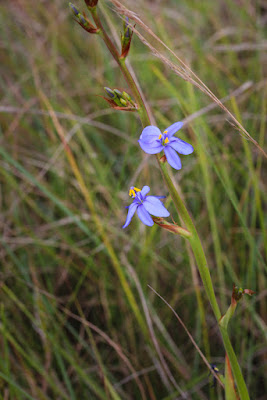As the conditions were conducive after the sprinkling of rain we had in the morning, Kate and I donned gumboots and set off for a walk at the section of the Red Desert Nature Reserve which lies on the coast side of the R61 highway which is locally known as Rennie's Beach.
While we have been aware of the presence of the short spur form of Eulophia parviflora in these grasslands this was the first occasion we saw one there. Nearby we found some Bonatea boltonii in flower.
 |
| Bonatea boltonii |
The surprise of the afternoon was the great show of Watsonia pilansii growing in a wetland. Also in the same wetland were several Disa similis.
 |
| A wetland full of Watsonia pilansii |
The Eriosema dregei were also putting on a good display and we also found several plants of the species we believe is to be described as Eriosema stylesii. Another of the legumes, Argyrolobium amplexicaule, is starting to produce its showy yellow clusters of flowers.
 |
| Argyrolobium amplexicaule |
Participants: Graham G, Kate G.







































































